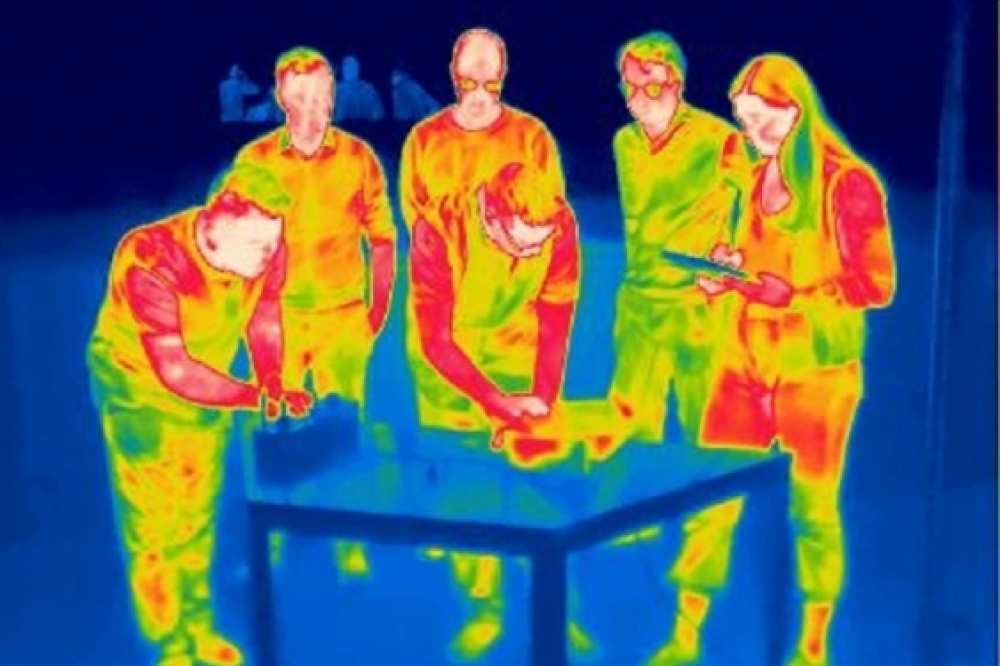Australian team generates electricity from HgCdTe photodiodes

Study suggests Earth’s radiant infrared heat can be used to generate electricity, even after the sun has set
Thermoradiative diodes are a less well-known counterpart to solar photovoltaics. They use the net emission of light rather than its absorption to generate power.
While there are promising theoretical predications for applying the technology in night-sky power generation and waste heat recovery, the current technological limits have not been explored.
Now a team at the University of South Wales in Australia has measured the electro-optical characteristics of HgCdTe photodiodes across a range of bandgap energies in both thermoradiative and photovoltaic operation. The results of the research were published in ACS Photonics.
“In the same way that a solar cell can generate electricity by absorbing sunlight emitted from a very hot sun, the thermoradiative diode generates electricity by emitting infrared light into a colder environment. In both cases the temperature difference is what lets us generate electricity,” said Phoebe Pearce, one of the paper’s co-authors.
At a temperature differential of only 12.5degC, the team measured a peak thermoradiative electrical power density of 2.26 mW/m2 for a photodiode emitting near 4.7 μm, with an estimated radiative efficiency of 1.8 percent.
Although the amount of power generated at this stage is very small – around 100,000 times less than that supplied by a solar panel – the researchers believe the result can be improved in the future. And that the Earth’s radiant infrared heat can be used to generate electricity, even after the sun has set.
“We have made an unambiguous demonstration of electrical power from a thermoradiative diode,” said team lead Ned Ekins-Daukes.
“Using thermal imaging cameras you can see how much radiation there is at night, but just in the infrared rather than the visible wavelengths. What we have done is make a device that can generate electrical power from the emission of infrared thermal radiation.”
(The picture above shows the UNSW ‘night-time solar’ team captured via infrared camera, which uses the same kind of semiconductor technology to produce power from the emission of light.)
Flow of energy
Ekins-Daukes says the process is ultimately still harnessing solar power, which hits the Earth during the day in the form of sunlight and warms up the planet.
At night, this same energy radiates back into the vast, cold void of outer space in the form of infrared light with the thermoradiative diode now proven to be able to generate electricity by taking advantage of this process.
“Whenever there is a flow of energy, we can convert it between different forms,” he said.
“Photovoltaics, the direct conversion of sunlight into electricity, is an artificial process that humans have developed in order to convert the solar energy into power. In that sense the thermoradiative process is similar; we are diverting energy flowing in the infrared from a warm Earth into the cold universe,” Phoebe Pearce, added.
Ekins-Daukes likens the new research to the work of engineers at Bell Labs who demonstrated the first practical silicon solar cell in 1954.
That first silicon solar cell was only around 2 percent efficient, but now modern-day cells are able to convert around 23 percent of the sun’s light into electricity.
Michael Nielsen, co-author of the paper, said: “Even if the commercialisation of these technologies is still a way down the road, being at the very beginning of an evolving idea is such an exciting place to be as a researcher.
“By leveraging our knowledge of how to design and optimise solar cells and borrowing materials from the existing mid-infrared photodetector community, we hope for rapid progress towards delivering the dream of solar power at night.”
The research team believe the new technology could have a range of uses in the future by helping to produce electricity in ways not currently possible.
Power from body heat
One of these could be powering bionic devices, such as artificial hearts, which currently run off batteries which need to be regularly replaced.
Ekins-Daukes said: “In principle it is possible for us to generate power in the way we have demonstrated just from body heat - which you can see glowing if you look through a thermal camera.
“Down the line, this technology could potentially harvest that energy and remove the need for batteries in certain devices – or help to recharge them. That isn’t something where conventional solar power would necessarily be a viable option.”
The new UNSW results build on previous work from the group where co-author Andreas Pusch developed a mathematical model that helped guide their laboratory experiments.
'Thermoradiative Power Conversion from HgCdTe Photodiodes and Their Current–Voltage Characteristics' by Michael P. Nielsen et al; ACS Photonics (2022)


































